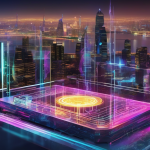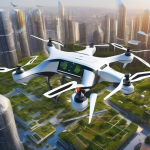7 AI Trends to Watch in 2025
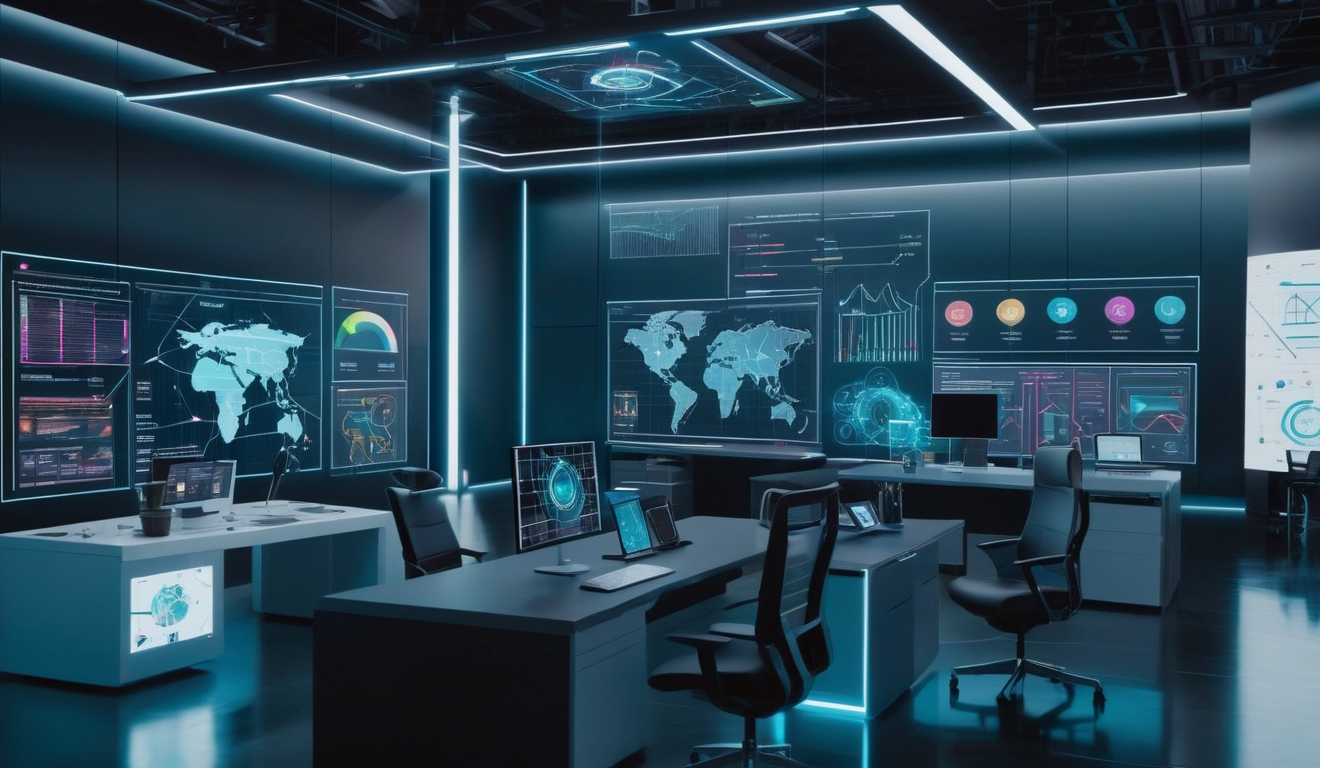
As we peer into the crystal ball of technology, artificial intelligence (AI) is poised to redefine our lives in ways we can only begin to imagine. By 2025, AI will not just be a buzzword; it will be an integral part of our daily existence, influencing everything from how we communicate to how we manage our health. In this article, we will explore the most significant AI trends that are expected to shape industries and daily life in the near future. Buckle up, because the future is about to get exciting!
Imagine having a conversation with your computer as easily as you would with a friend. That’s the promise of enhanced Natural Language Processing (NLP). This technology is advancing rapidly, allowing machines to understand and generate human language more effectively than ever before. In 2025, we can expect a revolution in customer service and communication tools, where chatbots and virtual assistants will not only respond to queries but will also understand context and emotions. This leap in NLP will enable businesses to provide more personalized and engaging customer experiences, leading to higher satisfaction rates.
The integration of AI in healthcare is set to bring about a paradigm shift in how we approach medical treatment. With AI’s ability to analyze vast amounts of data, it will improve diagnostics, personalize treatment plans, and streamline operations. Imagine a world where your doctor has access to real-time data and can make informed decisions instantly. This will not only enhance patient outcomes but also significantly reduce costs in the medical field. The future of healthcare is bright, and AI is at the forefront of this transformation.
AI-powered automation is transforming industries by increasing efficiency and productivity. Picture this: machines handling repetitive tasks while humans focus on strategic initiatives. This shift will allow businesses to innovate and grow without being bogged down by mundane processes. In 2025, we will see a more significant reliance on AI to manage workflows, optimize resources, and ultimately, drive profitability.
As AI becomes more prevalent, the conversation around ethical AI development is gaining traction. Questions of fairness, accountability, and transparency in AI systems are becoming crucial. It’s essential for developers and organizations to consider the ethical implications of their technologies. In 2025, we can expect more guidelines and frameworks to ensure that AI serves humanity positively and equitably.
With the rise of digital threats, AI is stepping up as a powerful ally in enhancing cybersecurity. By predicting threats, detecting anomalies, and responding to attacks in real-time, AI is making digital environments safer for users and organizations alike. In 2025, we will witness a new era of cybersecurity where AI not only protects but also anticipates potential breaches before they happen.
The education sector is on the brink of a revolution thanks to AI. By 2025, we will see personalized learning experiences that cater to individual student needs. Adaptive learning platforms will provide tailored content, ensuring that every student can learn at their own pace. This innovation will improve overall educational outcomes and make learning more engaging and effective.
Finally, AI technologies are being leveraged to tackle environmental challenges. From optimizing resource use to reducing waste, AI is facilitating sustainable practices across various industries. By 2025, we will see AI playing a crucial role in combating climate change, making our planet a cleaner and greener place to live.
In conclusion, the trends we are witnessing today are just the tip of the iceberg. As we move towards 2025, the integration of AI into our lives will not only enhance efficiency and productivity but also pose new ethical challenges that we must navigate carefully. The future is bright, and AI is leading the charge!
| AI Trend | Impact |
|---|---|
| Enhanced NLP | Revolutionizes communication and customer service |
| AI in Healthcare | Improves diagnostics and personalizes treatment |
| AI-Powered Automation | Increases efficiency and allows focus on strategic tasks |
| Ethical AI Development | Ensures fairness and accountability in AI systems |
| AI and Cybersecurity | Enhances protection against digital threats |
| AI in Education | Personalizes learning experiences for students |
| AI for Sustainability | Addresses environmental challenges effectively |
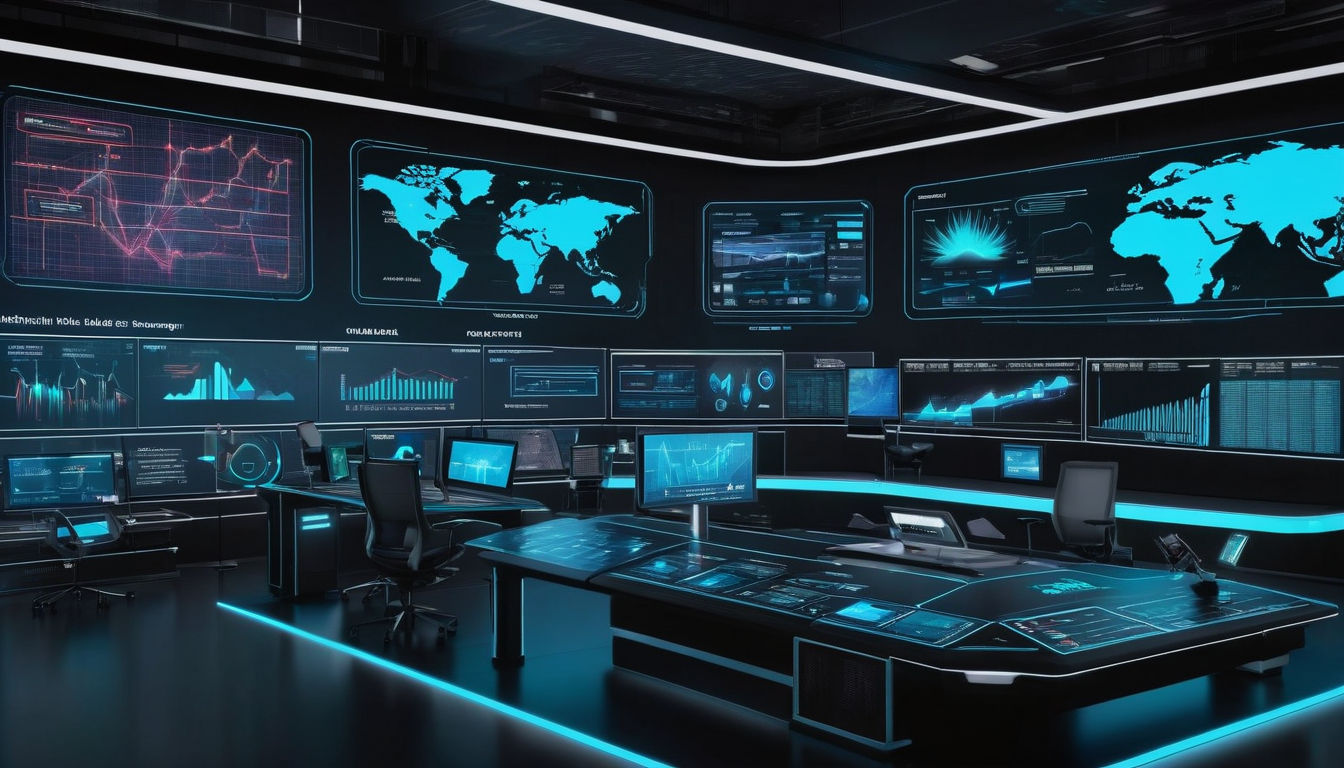
1. Enhanced Natural Language Processing
As we leap into the future, one of the most exciting advancements we can expect in Enhanced Natural Language Processing (NLP) is how it will reshape our interactions with technology. Imagine a world where your devices understand you as well as your best friend does. With AI’s rapid evolution, machines are becoming increasingly adept at interpreting and generating human language. This means that customer service interactions, chatbots, and even virtual assistants will feel more intuitive and human-like.
The implications of this are profound. For instance, businesses will no longer rely on standard scripts for customer interactions. Instead, AI-driven systems will adapt in real-time, providing personalized responses that cater to individual needs. This will not only enhance customer satisfaction but also streamline communication processes. According to a recent study, companies utilizing advanced NLP technologies have seen a 30% increase in customer engagement.
| Benefit | Impact |
|---|---|
| Improved Customer Service | Higher satisfaction and loyalty |
| Efficiency in Communication | Reduced response times |
| Personalization | Tailored experiences for users |
Furthermore, the integration of AI in NLP will enable businesses to analyze customer sentiment more effectively. By understanding the emotions behind the words, companies can tailor their marketing strategies and product offerings to better meet consumer needs. It’s like having a crystal ball that reveals what your customers truly want!
However, as we embrace these advancements, we must also consider the ethical implications. The rise of NLP technology raises questions about privacy, data security, and the potential for misuse. It’s crucial for developers and organizations to prioritize ethical AI practices, ensuring that these powerful tools are used responsibly.
In conclusion, the future of Enhanced Natural Language Processing is not just about technology; it’s about creating a more connected and understanding world. As we navigate this exciting landscape, we should remain vigilant about the challenges that come with it, ensuring that the benefits far outweigh the risks. Are you ready to embrace the future of communication?
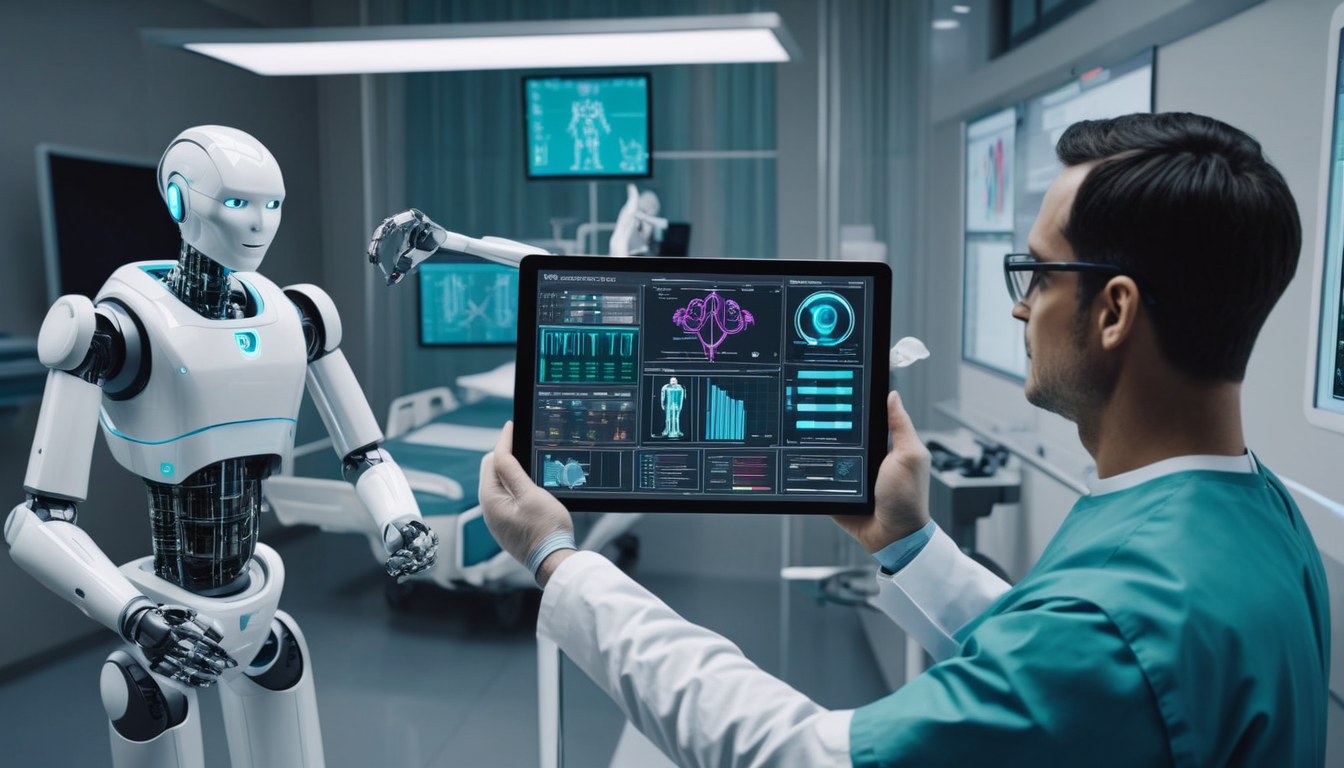
2. AI in Healthcare
The integration of AI in healthcare is not just a trend; it’s a revolution that promises to reshape the entire medical landscape. Imagine a world where doctors have the power of advanced algorithms at their fingertips, allowing them to make quicker, more accurate diagnoses. This isn’t science fiction; it’s happening right now. AI technologies are paving the way for enhanced diagnostics, personalized treatment plans, and streamlined operations, ultimately leading to improved patient outcomes and reduced costs.
One of the most exciting aspects of AI in healthcare is its potential to analyze vast amounts of data. With the ability to process information at lightning speed, AI systems can identify patterns and anomalies that a human eye might miss. For instance, AI algorithms can sift through medical records, lab results, and imaging studies to detect early signs of diseases like cancer or diabetes. This proactive approach can lead to earlier interventions, which is often the key to successful treatment.
Additionally, AI is making strides in personalized medicine. By analyzing genetic information and lifestyle factors, AI can help healthcare providers tailor treatments to individual patients. This means that instead of a one-size-fits-all approach, treatments can be customized to fit the unique needs of each patient, enhancing effectiveness and minimizing side effects. Here’s a quick breakdown of how AI is transforming personalized medicine:
| Aspect | Traditional Approach | AI-Driven Approach |
|---|---|---|
| Diagnosis | Generalized tests | Data-driven insights |
| Treatment | Standard protocols | Customized plans |
| Monitoring | Periodic check-ups | Continuous tracking |
Moreover, AI can significantly enhance operational efficiency within healthcare facilities. By automating administrative tasks such as scheduling appointments, managing patient records, and handling billing, healthcare professionals can devote more time to patient care. This not only improves the patient experience but also reduces the burden on staff, allowing them to focus on what truly matters—saving lives.
However, the rise of AI in healthcare is not without its challenges. As we embrace these technologies, ethical considerations must be at the forefront of discussions. Questions surrounding data privacy, security, and the potential for bias in AI algorithms are critical. It’s essential for stakeholders to ensure that AI systems are developed with fairness and accountability in mind.
In conclusion, the future of AI in healthcare is bright, with the potential to transform how we approach medicine. As we continue to harness the power of AI, we can look forward to a healthcare system that is not only more efficient but also more responsive to the needs of patients. Are we ready to embrace this change? The answer lies in our commitment to ethical development and responsible implementation of these groundbreaking technologies.
“AI in healthcare is not just about technology; it’s about improving lives.”
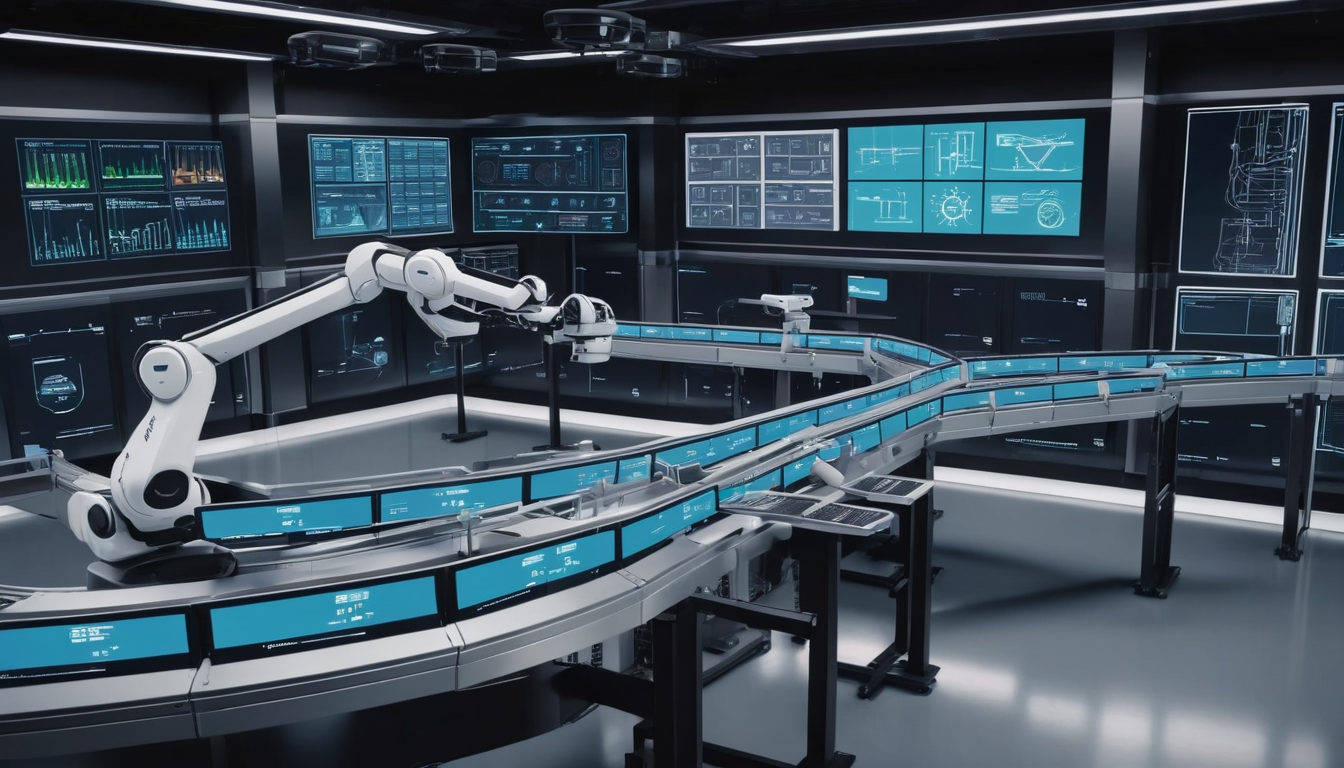
3. AI-Powered Automation
In the ever-evolving landscape of technology, AI-powered automation is emerging as a game-changer for various industries. Imagine a world where mundane tasks are handled by intelligent systems, allowing human workers to focus on more strategic and creative endeavors. This shift not only boosts productivity but also enhances job satisfaction, as employees can engage in work that requires critical thinking and innovation.
As businesses increasingly adopt AI-driven automation, they are witnessing remarkable transformations in their operations. From manufacturing to customer service, AI tools are streamlining processes and reducing human error. For instance, consider how AI can manage inventory levels in real-time, predict maintenance needs for machinery, or even handle customer inquiries through sophisticated chatbots.
| Industry | AI-Powered Automation Applications |
|---|---|
| Manufacturing | Predictive maintenance, quality control, and supply chain optimization |
| Healthcare | Automated diagnostics, patient scheduling, and billing processes |
| Customer Service | Chatbots, automated responses, and personalized customer interactions |
| Finance | Fraud detection, risk assessment, and automated trading |
The benefits of AI-powered automation are vast. Here are a few key advantages:
- Increased Efficiency: Tasks that once took hours can now be completed in minutes, freeing up valuable time for employees.
- Cost Savings: Reducing labor costs and minimizing errors leads to significant financial savings.
- Enhanced Accuracy: Machines can perform repetitive tasks with precision, reducing the likelihood of human error.
However, the rise of AI-powered automation also raises important questions about the future of work. Will machines take over jobs? The answer is nuanced. While some positions may become obsolete, new roles will emerge that require human oversight and creativity. As we embrace this technological revolution, it’s crucial to focus on upskilling the workforce to thrive alongside AI.
In conclusion, AI-powered automation is not just a trend; it’s a fundamental shift in how we operate across various sectors. As we look towards 2025, businesses that leverage these technologies will not only enhance their operational efficiency but also drive innovation in ways we are just beginning to understand. So, are you ready to embrace the future of work?
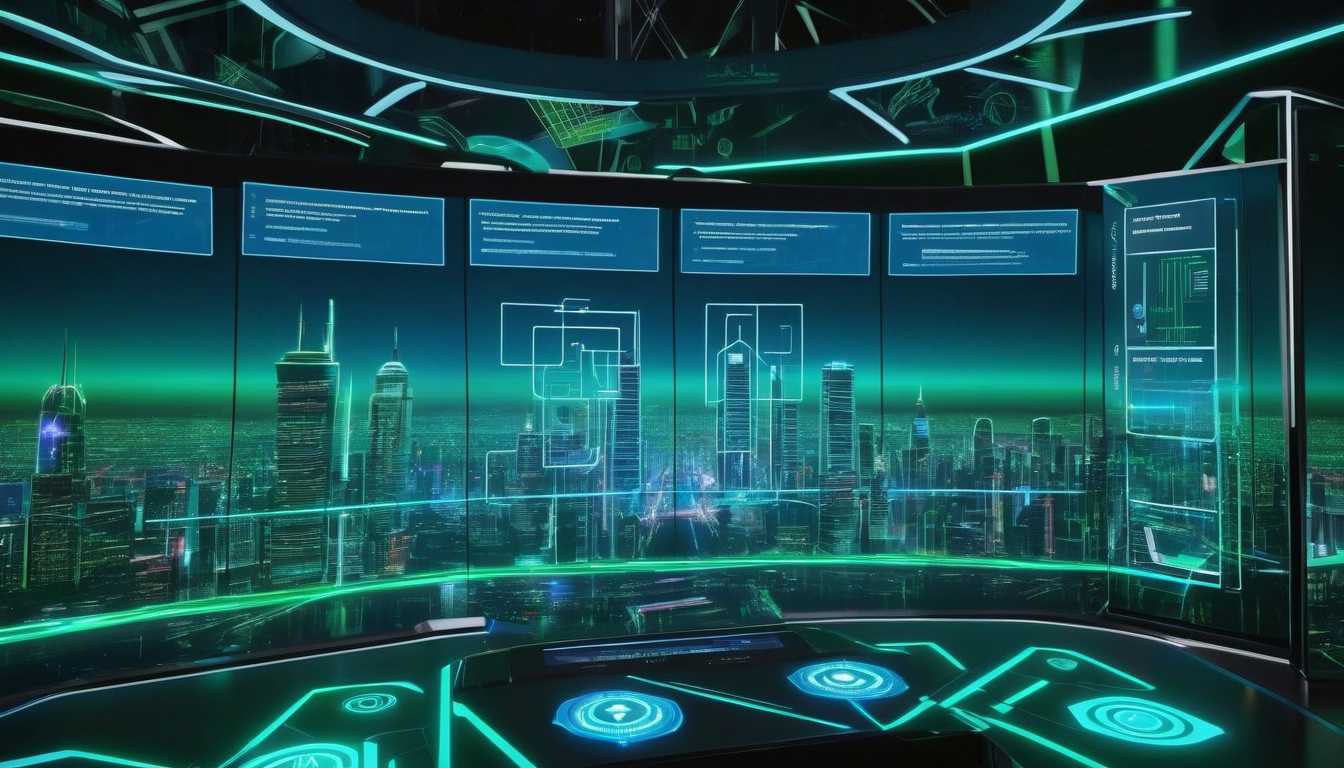
4. Ethical AI Development
The rapid evolution of artificial intelligence (AI) has sparked a crucial conversation about ethical AI development. As machines become increasingly capable of making decisions that impact our lives, it’s essential to ensure that these systems are designed with fairness, accountability, and transparency at their core. Imagine AI as a double-edged sword; it can either be a powerful ally or a potential threat, depending on how we choose to wield it.
One of the primary concerns in ethical AI development is the potential for bias in algorithms. If the data used to train AI systems is biased, the resulting decisions can also be biased, leading to unfair treatment of certain groups. For instance, if an AI system is used in hiring processes, it could inadvertently favor candidates from specific backgrounds over others. This not only raises ethical questions but could also result in legal ramifications for companies.
To combat these issues, many organizations are adopting frameworks and guidelines that prioritize ethical considerations in AI development. Here are some key principles that are often highlighted:
- Fairness: Ensuring that AI systems do not discriminate against individuals or groups.
- Accountability: Establishing clear lines of responsibility for AI-driven decisions.
- Transparency: Making AI processes understandable and accessible to users.
- Privacy: Safeguarding personal data and ensuring user consent.
Moreover, regulatory bodies are beginning to step in, creating laws and guidelines to govern the ethical use of AI. For example, the European Union has proposed regulations that focus on high-risk AI applications, mandating that these systems undergo rigorous assessments before deployment. This proactive approach aims to mitigate risks associated with AI while fostering innovation.
| Principle | Description |
|---|---|
| Fairness | AI systems should treat all individuals equally, without bias. |
| Accountability | Clear accountability must be established for AI decisions. |
| Transparency | AI processes should be understandable and explainable. |
| Privacy | Data protection and user consent should be prioritized. |
In conclusion, as we advance further into the realm of AI, the importance of ethical AI development cannot be overstated. It’s not just about creating intelligent systems; it’s about creating systems that are intelligent and responsible. By prioritizing ethics in AI, we can harness its potential while minimizing risks, ensuring a future where technology serves humanity rather than undermines it.
As we look ahead, the challenge will be to balance innovation with ethical considerations. Will we rise to the occasion and ensure that our AI systems reflect our values? The answer to that question may very well shape the future of our society.
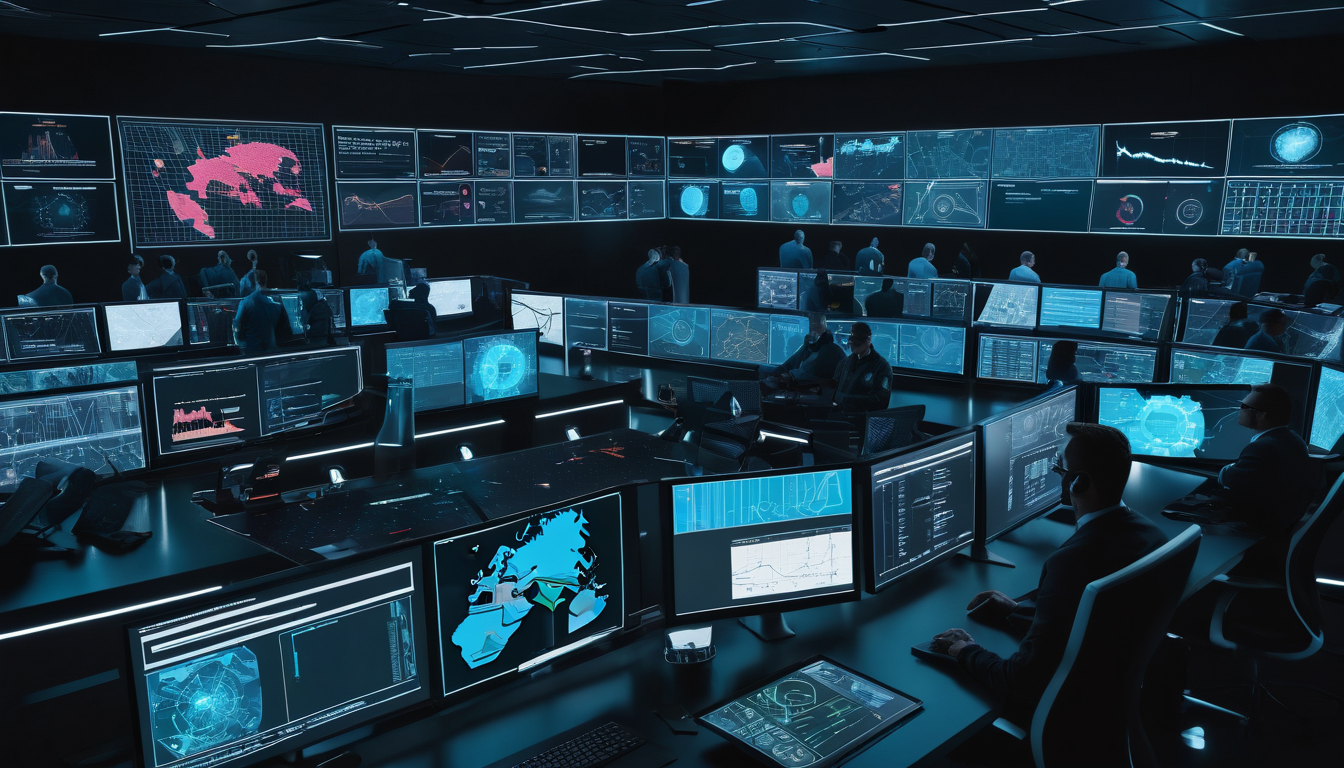
5. AI and Cybersecurity
The world of cybersecurity is evolving at a breakneck pace, and artificial intelligence is at the forefront of this transformation. With cyber threats becoming increasingly sophisticated, traditional security measures are often insufficient. Enter AI, the game-changer that’s revolutionizing how we protect sensitive information and digital assets. Imagine having a vigilant guard that not only watches over your data but also learns from every potential threat it encounters. That’s the essence of AI in cybersecurity.
AI technologies are being harnessed to predict and prevent cyber attacks before they even occur. By analyzing vast amounts of data, AI can identify patterns and anomalies that may indicate a security breach. For instance, machine learning algorithms can detect unusual user behavior, flagging it for further investigation. This proactive approach is akin to having a smoke detector that not only alerts you to fire but also predicts when one might start.
Moreover, AI enhances the efficiency of security systems by automating routine tasks. This allows cybersecurity professionals to focus on more complex issues rather than getting bogged down in repetitive monitoring. Here are some key areas where AI is making a significant impact:
- Threat Detection: AI systems can analyze network traffic in real-time, identifying potential threats faster than human monitors.
- Incident Response: Automated responses can be triggered by AI when a threat is detected, mitigating damage before human intervention is even needed.
- Phishing Prevention: AI tools can scan emails and websites for signs of phishing attempts, protecting users from falling victim to scams.
In addition to these capabilities, AI is also instrumental in enhancing cybersecurity frameworks. Organizations are increasingly adopting AI-driven solutions to bolster their defenses against the ever-evolving landscape of cyber threats. A recent study highlighted that companies using AI for cybersecurity reported a 30% reduction in successful cyber attacks. This statistic underscores the critical role AI plays in safeguarding digital environments.
| AI Applications in Cybersecurity | Benefits |
|---|---|
| Threat Intelligence | Increases the speed of threat detection and response. |
| Behavioral Analysis | Identifies anomalies in user behavior to prevent breaches. |
| Automated Security Protocols | Reduces the workload on human operators, allowing them to focus on strategy. |
As we delve deeper into the future, the collaboration between AI and cybersecurity will only grow stronger. Organizations must embrace these technologies not just as tools, but as essential partners in the fight against cybercrime. With AI’s ability to learn and adapt, the potential for enhancing cybersecurity measures is limitless. So, are you ready to leverage AI to fortify your defenses?
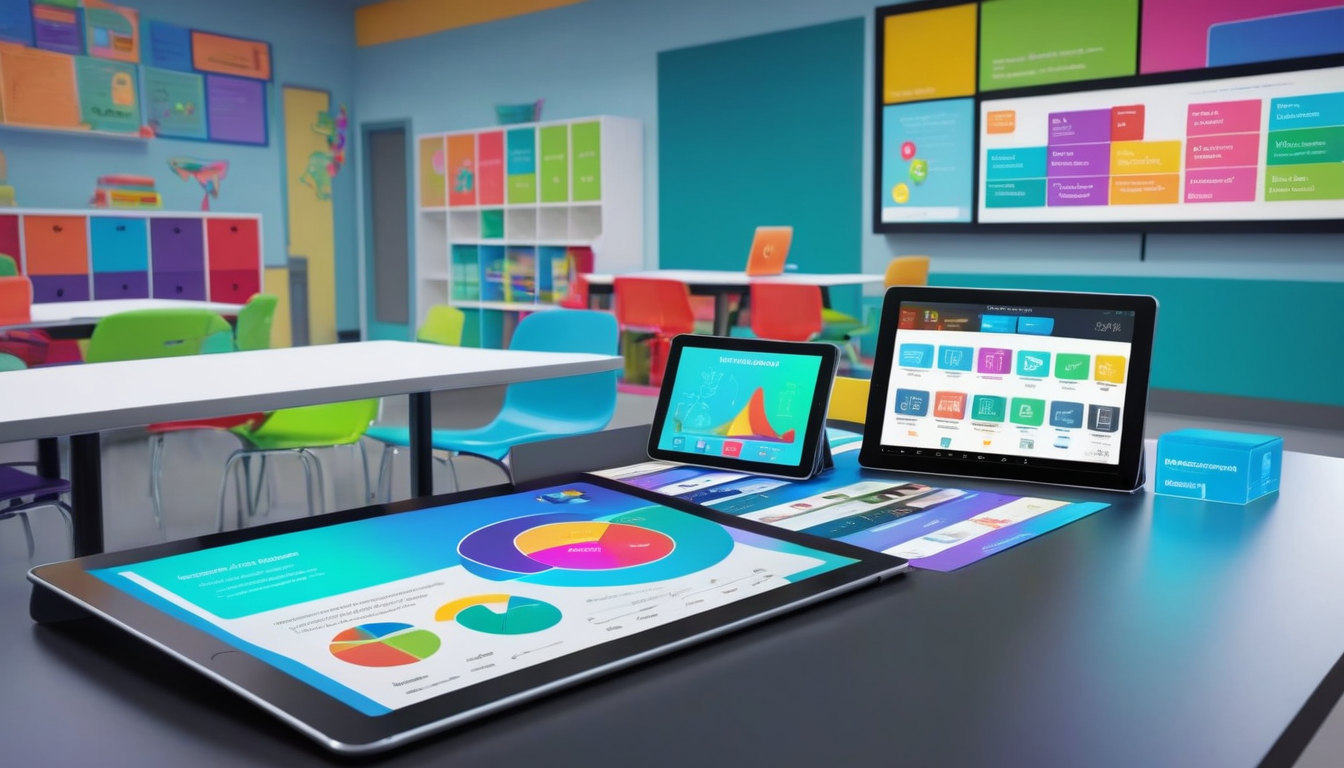
6. AI in Education
Artificial Intelligence is truly transforming the education landscape in ways we never thought possible. Imagine a classroom where each student receives personalized attention tailored to their unique learning style. This isn’t just a dream anymore; it’s becoming a reality thanks to AI technologies. With the power of adaptive learning platforms, students can progress at their own pace, ensuring that no one is left behind.
One of the most exciting aspects of AI in education is its ability to analyze data from student interactions and performance. This information helps educators identify areas where students struggle and adjust their teaching methods accordingly. For instance, if a student is having difficulty with a specific concept, AI can suggest targeted resources or exercises to reinforce that knowledge. This is akin to having a personal tutor available 24/7!
Moreover, AI can automate administrative tasks, freeing up valuable time for teachers to focus on what they do best: teaching. By streamlining processes such as grading and attendance tracking, AI enables educators to devote more energy to engaging with students and enhancing the learning experience.
| AI Applications in Education | Benefits |
|---|---|
| Adaptive Learning Systems | Customized learning paths for students |
| Automated Grading Tools | Reduces workload for teachers |
| AI Tutors | Provides additional support for students |
| Data Analytics | Identifies learning trends and challenges |
In addition to these innovations, AI is also facilitating collaborative learning experiences. Students can engage with peers across the globe, sharing knowledge and ideas in real-time. This not only broadens their perspectives but also fosters a sense of community and teamwork. The possibilities are endless!
Of course, as with any technological advancement, there are challenges to consider. Privacy concerns and the ethical implications of AI in education are hot topics right now. It’s crucial for educational institutions to implement AI responsibly, ensuring that student data is protected and used ethically.
Ultimately, the integration of AI in education represents a significant leap forward. As we embrace these technologies, we must also remain vigilant about the potential pitfalls. By fostering a culture of innovation and responsibility, we can harness AI’s full potential to create a brighter future for students everywhere.
“Education is the most powerful weapon which you can use to change the world.” – Nelson Mandela
As we look ahead to the future of education, it’s clear that AI will play a pivotal role in shaping how we learn and teach. The question now is, are we ready to embrace this change?
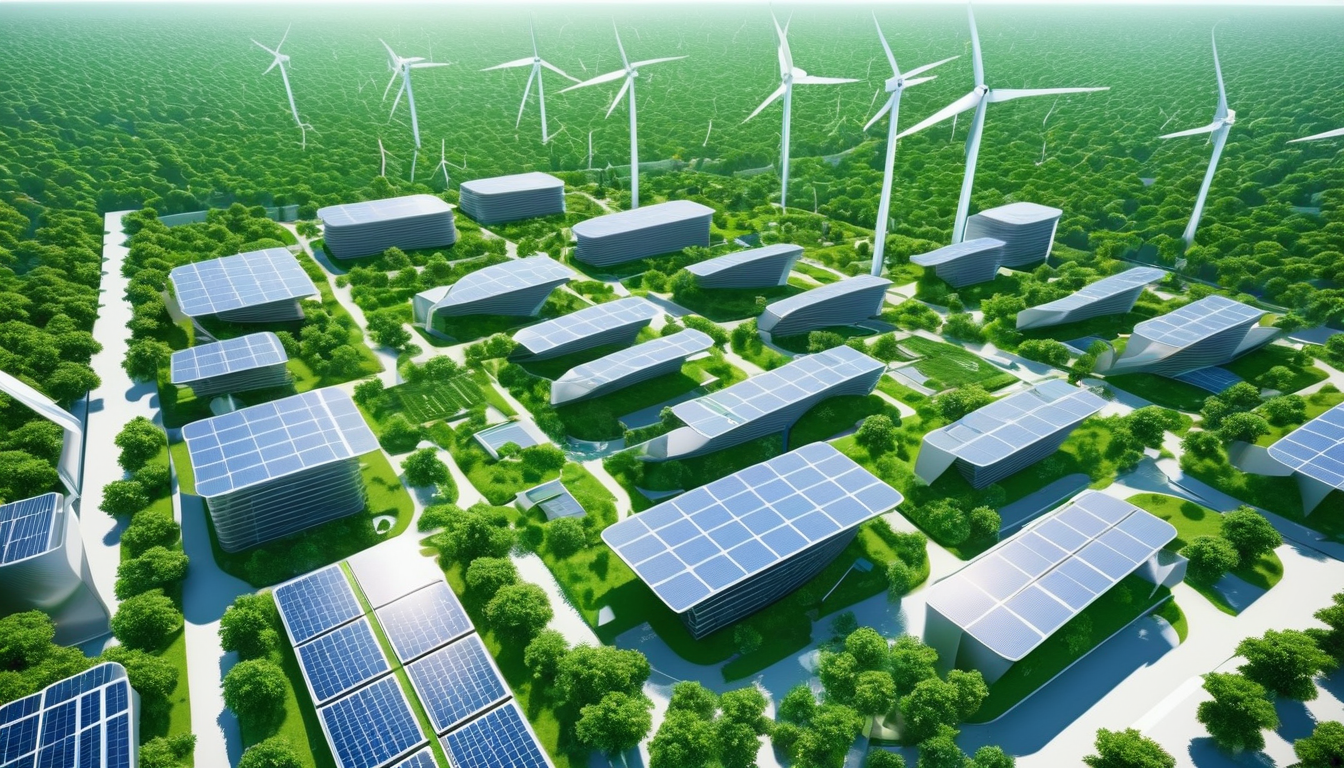
7. AI for Sustainability
In an era where climate change and environmental degradation are pressing concerns, AI for Sustainability is emerging as a beacon of hope. The integration of artificial intelligence into sustainability efforts is not just a trend; it’s a necessity. By leveraging advanced algorithms and data analytics, AI is helping organizations and governments make smarter decisions that benefit both the planet and society.
One of the most exciting aspects of AI is its ability to optimize resource use. For instance, AI systems can analyze vast amounts of data to identify inefficiencies in energy consumption. This means that businesses can significantly reduce their carbon footprint while saving on operational costs. Imagine a factory that uses AI to adjust its energy use in real-time based on production needs; this not only conserves energy but also minimizes waste.
Furthermore, AI is playing a crucial role in waste management. Through machine learning, AI can predict waste generation patterns, allowing cities to optimize their waste collection routes and schedules. This not only enhances efficiency but also reduces greenhouse gas emissions from waste collection vehicles. The table below illustrates how AI can impact various aspects of sustainability:
| Area of Impact | AI Applications | Benefits |
|---|---|---|
| Energy Management | Smart grids, predictive maintenance | Reduced energy consumption, lower costs |
| Water Conservation | Leak detection, usage monitoring | Minimized water waste, improved efficiency |
| Agriculture | Precision farming, crop monitoring | Higher yields, reduced resource use |
| Transportation | Route optimization, autonomous vehicles | Lower emissions, reduced traffic congestion |
The potential of AI to drive sustainability is vast. For example, in agriculture, AI technologies can analyze soil health and weather patterns to recommend the best times for planting and harvesting. This not only boosts productivity but also conserves resources. In cities, AI can manage traffic flows to reduce congestion and emissions, making urban environments more livable.
As we look towards the future, the collaboration between AI and sustainability will only deepen. Companies that embrace this technology will not only contribute to a healthier planet but will also find themselves ahead of the curve in a rapidly changing world. Are we ready to harness the power of AI for a sustainable future? The answer lies in the choices we make today.
In conclusion, AI for Sustainability is not just about technology; it’s about creating a better world for future generations. By integrating AI into our sustainability efforts, we can tackle some of the most pressing environmental challenges we face today. Let’s embrace this opportunity to innovate and inspire change.
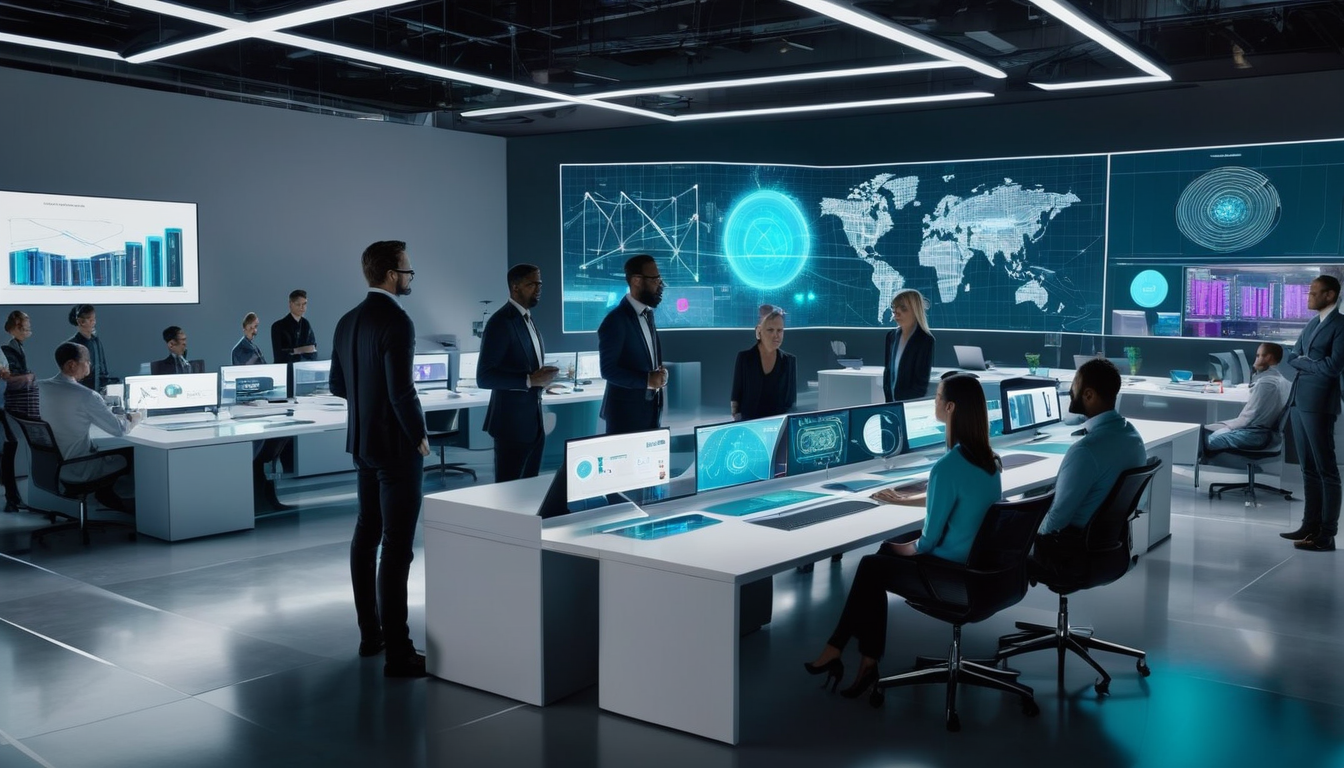
8. Human-AI Collaboration
As we venture deeper into the realm of artificial intelligence, one of the most exciting trends to watch is the collaboration between humans and AI systems. Imagine a world where machines not only assist us but also enhance our decision-making processes, much like a trusted partner in a dance. This synergy is not just about efficiency; it’s about unlocking new potentials that were previously unimaginable.
In this evolving landscape, AI is becoming a co-pilot in various sectors, helping professionals make informed choices by analyzing vast amounts of data at lightning speed. For instance, in fields such as healthcare, AI can sift through medical records and research papers, providing doctors with insights that allow for more accurate diagnoses and personalized treatment plans. This collaboration can significantly improve patient outcomes and streamline workflows.
Moreover, the integration of AI into creative industries is another fascinating aspect of human-AI collaboration. Artists and designers are leveraging AI tools to brainstorm ideas, generate content, and even create music. This partnership pushes the boundaries of artistic expression, allowing for innovative outcomes that blend human creativity with machine efficiency.
However, it’s essential to approach this collaboration with a sense of responsibility. As we embrace AI, we must also consider ethical implications and ensure that these technologies are developed and used in a way that prioritizes fairness and accountability. Here are some key points to consider:
- Transparency: Users should understand how AI systems make decisions.
- Accountability: Clear lines of responsibility must be established for AI actions.
- Inclusivity: AI should be designed to serve diverse populations without bias.
To visualize the impact of human-AI collaboration, consider the following table that outlines various industries and how AI is enhancing human capabilities:
| Industry | Human Role | AI Contribution |
|---|---|---|
| Healthcare | Doctors and Nurses | Data analysis for diagnostics |
| Finance | Financial Analysts | Risk assessment and fraud detection |
| Education | Teachers | Personalized learning experiences |
| Creative Arts | Artists and Musicians | Content generation and idea brainstorming |
In conclusion, the future of human-AI collaboration is bright and filled with possibilities. As we harness the power of AI, we must remain vigilant about the ethical implications and strive for a partnership that enhances human potential rather than replacing it. With thoughtful integration, we can achieve remarkable advancements that benefit society as a whole.

9. AI in Finance
The financial sector is undergoing a revolution thanks to the integration of artificial intelligence. From improving risk assessment to enhancing customer service, AI is reshaping how financial institutions operate. Imagine a world where your bank knows you so well that it can predict your spending habits and offer personalized financial advice at just the right moment. This isn’t just a dream; it’s becoming a reality!
One of the most significant impacts of AI in finance is in the realm of fraud detection. Traditional methods of monitoring transactions can be slow and often miss suspicious activities. However, AI algorithms can analyze vast amounts of data in real-time, identifying patterns that indicate potential fraud. This not only protects consumers but also saves financial institutions millions of dollars each year.
Moreover, AI is enhancing customer service through the use of chatbots and virtual assistants. These AI-driven tools provide immediate assistance, answering queries, and resolving issues without the need for human intervention. This leads to higher customer satisfaction and allows human agents to focus on more complex tasks that require a personal touch.
To give you a clearer picture of how AI is transforming finance, here’s a table highlighting key areas where AI is making a difference:
| AI Applications | Benefits |
|---|---|
| Risk Assessment | Improved accuracy in evaluating creditworthiness |
| Fraud Detection | Real-time monitoring and anomaly detection |
| Customer Service | 24/7 support and personalized interactions |
| Trading Algorithms | Faster and more informed trading decisions |
The rise of AI in finance also brings about a new set of challenges. With great power comes great responsibility, and the industry must navigate issues related to data privacy and ethical considerations. Financial institutions are now tasked with ensuring that their AI systems are transparent and fair, preventing biases that could lead to unfair treatment of customers.
In conclusion, the future of finance is undoubtedly intertwined with artificial intelligence. As we move towards a more automated and efficient financial landscape, it’s essential for both consumers and institutions to stay informed and engaged. The AI revolution in finance is just beginning, and those who embrace these changes will lead the way in innovation and customer satisfaction.
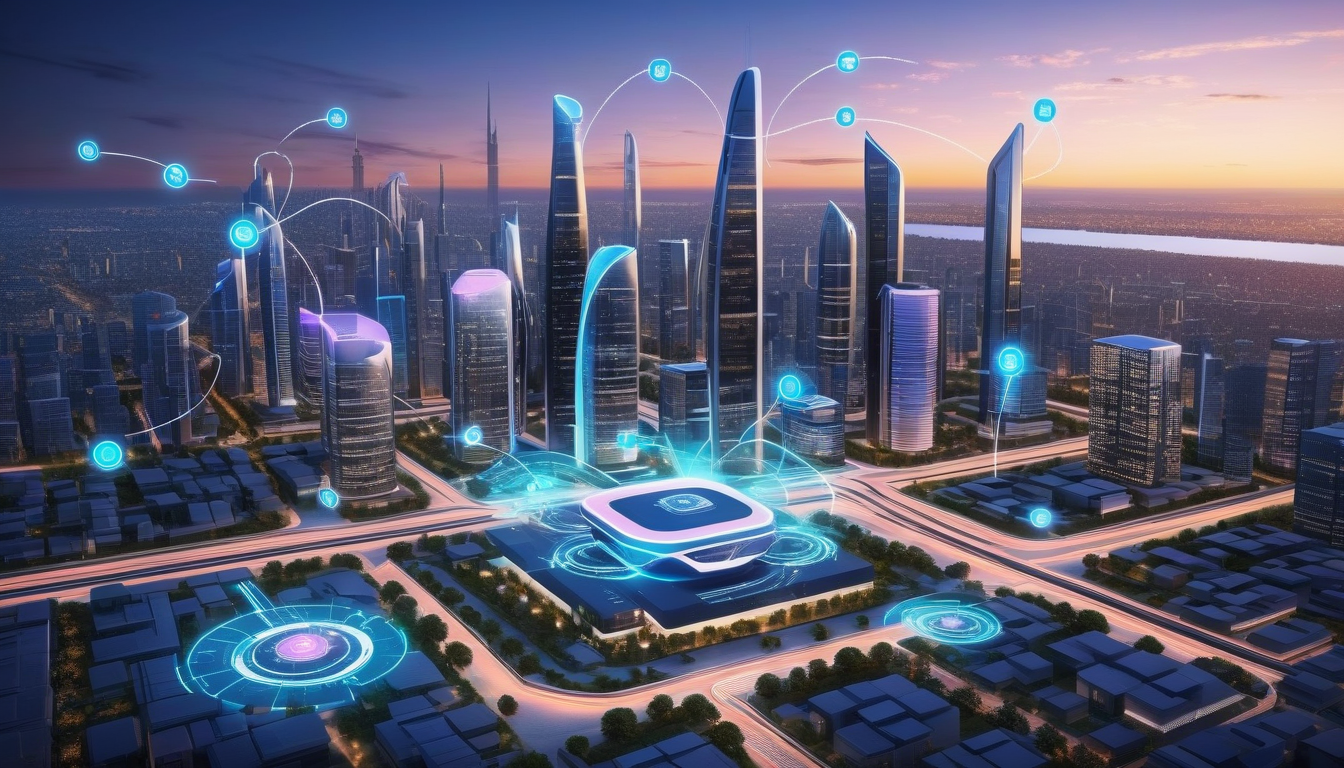
10. Edge AI Development
Edge AI development is rapidly becoming a game-changer in how we process and analyze data. By bringing computation closer to the source of data generation, Edge AI minimizes latency and enhances real-time decision-making capabilities. Imagine a world where your smart devices can process information instantly, without relying on distant cloud servers. This is not just a dream; it’s the future we are stepping into.
As technology evolves, the demand for faster and more efficient data processing grows. Edge AI addresses this need by enabling devices such as IoT sensors, autonomous vehicles, and smart cameras to perform complex computations on-site. For instance, a self-driving car equipped with Edge AI can analyze its surroundings in real-time, making split-second decisions to ensure passenger safety. This is akin to having a personal assistant that not only listens but also understands and reacts instantly to your needs.
One of the most significant advantages of Edge AI is its ability to reduce bandwidth usage. By processing data locally, only the necessary information is sent to the cloud, which leads to lower costs and improved efficiency. This is especially crucial in environments where connectivity is limited or unreliable. For example, in remote areas, Edge AI can operate independently, ensuring continuous functionality without a constant internet connection.
To better understand the impact of Edge AI development, let’s look at some key areas where it is making waves:
| Application | Benefits |
|---|---|
| Smart Cities | Improved traffic management and energy efficiency |
| Healthcare | Real-time patient monitoring and diagnostics |
| Manufacturing | Predictive maintenance and optimized production lines |
| Retail | Enhanced customer experience through personalized services |
As we dive deeper into the era of Edge AI, it’s essential to consider the challenges that come with it. Security concerns, data privacy, and the need for robust infrastructure are just a few hurdles that developers must navigate. However, with the right strategies in place, these challenges can be addressed effectively. This evolution of technology is not just about innovation; it’s about creating a safer, more efficient, and interconnected world.
In conclusion, the future of Edge AI development holds immense potential. As we continue to embrace this technology, we can expect a significant transformation in various industries, enhancing our daily lives and making our environments smarter. So, the next time you marvel at your smart device’s capabilities, remember that Edge AI is the silent powerhouse driving that innovation.
“The edge is where intelligence meets action.”

11. AI in Creative Industries
Artificial Intelligence is not just a tool for automation; it’s becoming a vital partner in the creative industries. Imagine a world where machines can assist artists, musicians, and writers in pushing the boundaries of their creativity. This is not science fiction; it’s happening right now! AI technologies are enabling creators to explore new avenues of artistic expression and innovation, making the impossible possible.
For instance, AI algorithms can analyze vast amounts of data to identify trends in art, music, and literature, providing creators with insights that can inspire new works. These tools can generate unique pieces of art or compose music that resonates with audiences, essentially acting as a collaborative partner. This collaboration between humans and AI is redefining what it means to be a creator.
| AI Tool | Function | Impact on Creative Process |
|---|---|---|
| DeepArt | Transforms photos into artworks | Enhances visual creativity for artists |
| AIVA | Composes music | Provides musicians with new compositions |
| ChatGPT | Generates written content | Assists writers in brainstorming ideas |
Moreover, AI can help in the editing process. Tools like Grammarly and Hemingway use AI to improve writing quality, making them indispensable for authors and content creators. They provide suggestions that enhance clarity, style, and grammar, allowing writers to focus more on their ideas rather than the mechanics of writing. Isn’t it fascinating how technology can streamline creativity?
However, the rise of AI in creative fields does raise some questions. How do we balance the use of AI with the essence of human creativity? Are we at risk of losing the personal touch that makes art, music, and literature so special? These are critical discussions that need to happen as we embrace this new wave of technology.
In conclusion, AI is revolutionizing the creative industries by providing tools that enhance, rather than replace, human creativity. As we move forward, it’s essential to foster a collaborative environment where AI and humans can work together to create extraordinary works of art. The future of creativity is bright, and it’s powered by AI!
Quote: “AI is not a replacement for human creativity; it is a tool that can amplify it.” – Anonymous
As we look towards the future, let’s embrace the potential of AI in creative industries while ensuring that we maintain the unique human touch that defines art and creativity.

12. The Rise of AI Regulations
The rapid evolution of artificial intelligence (AI) technologies has sparked a significant conversation around the need for AI regulations. As AI systems become more integrated into our daily lives, from chatbots assisting in customer service to algorithms making critical decisions in healthcare, the potential for misuse and ethical dilemmas has never been more pronounced. Governments and organizations worldwide are recognizing the necessity to establish frameworks that govern the development and deployment of AI, ensuring that these powerful tools are used responsibly.
In 2025, we can expect to see a surge in regulatory initiatives aimed at addressing various aspects of AI technology. These regulations will likely focus on several key areas:
- Privacy Protection: Safeguarding personal data collected by AI systems.
- Transparency: Ensuring that AI algorithms are understandable and accountable.
- Fairness: Preventing bias in AI decision-making processes.
- Security: Protecting AI systems from malicious attacks.
To illustrate the growing focus on AI regulations, consider the following table that summarizes some anticipated regulatory measures:
| Regulation Aspect | Description | Potential Impact |
|---|---|---|
| Data Privacy | Establishing guidelines for data collection and usage. | Enhanced user trust and compliance with privacy laws. |
| Algorithmic Transparency | Mandating clear explanations of AI decision-making processes. | Increased accountability and reduced discrimination. |
| Ethical AI Use | Setting standards for ethical considerations in AI deployment. | Promotion of responsible AI practices across industries. |
As we move forward, the challenge will be to strike a balance between fostering innovation and protecting public interests. This is akin to walking a tightrope—too much regulation could stifle creativity, while too little could lead to chaos. As the famous quote goes, “With great power comes great responsibility.” This sentiment rings true for AI developers and regulatory bodies alike.
In conclusion, the rise of AI regulations is not just a trend; it’s a necessary evolution in our relationship with technology. By establishing clear guidelines, we can harness the full potential of AI while safeguarding our values and ethics. The future of AI will depend not only on technological advancements but also on how well we navigate the regulatory landscape.
Frequently Asked Questions
- What is Natural Language Processing (NLP) and why is it important?
NLP is a branch of artificial intelligence that focuses on the interaction between computers and humans through natural language. It’s important because it allows machines to understand, interpret, and generate human language, making communication with technology more intuitive and efficient.
- How is AI transforming healthcare?
AI is revolutionizing healthcare by improving diagnostics, personalizing treatment plans, and streamlining operations. This not only enhances patient outcomes but also reduces costs, making healthcare more accessible and efficient.
- What does AI-powered automation mean for businesses?
AI-powered automation refers to the use of artificial intelligence to perform repetitive tasks, allowing businesses to increase efficiency and productivity. This gives employees more time to focus on strategic initiatives, ultimately driving growth and innovation.
- Why is ethical AI development crucial?
As AI becomes more integrated into our lives, ethical considerations are essential to ensure fairness, accountability, and transparency. This helps build trust in AI systems and mitigates potential risks associated with their deployment.
- How does AI enhance cybersecurity?
AI enhances cybersecurity by predicting threats, detecting anomalies, and responding to attacks in real-time. This proactive approach makes digital environments safer for users and organizations, significantly reducing the risk of data breaches.
- What role does AI play in education?
AI is transforming education by creating personalized learning experiences through adaptive learning platforms. These platforms cater to individual student needs, improving engagement and overall educational outcomes.
- Can AI help with sustainability efforts?
Absolutely! AI technologies are being used to tackle environmental challenges by optimizing resource use, reducing waste, and promoting sustainable practices across various industries, all of which contribute to combating climate change.
- What is human-AI collaboration?
Human-AI collaboration involves machines assisting humans in decision-making processes. This partnership enhances human capabilities and fosters innovation across different sectors, leading to better outcomes and creative solutions.
- How is AI changing the finance sector?
AI is transforming finance by improving risk assessment, fraud detection, and customer service. This leads to more efficient financial operations, helping organizations provide enhanced user experiences.
- What is Edge AI and why is it important?
Edge AI processes data closer to its source, enabling real-time analytics and reducing latency. This is particularly important for applications like IoT devices and autonomous vehicles, where timely data processing is critical for performance.
- How is AI influencing creative industries?
AI is making waves in creative fields by providing tools that assist in content creation, design, and music production. This not only pushes the boundaries of artistic expression but also fosters innovation in how we create and consume art.
- What are the implications of AI regulations?
As AI technology evolves, regulations are being developed to ensure its safe and responsible use. These regulations address privacy, security, and ethical concerns, helping to create a framework for the responsible development and deployment of AI.
